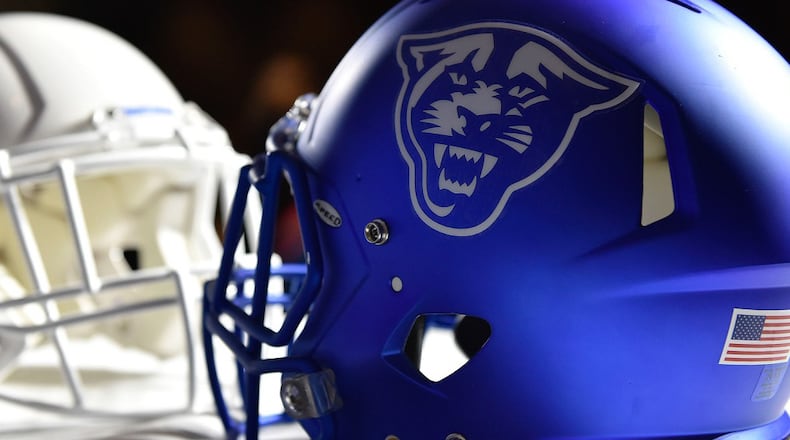Five major football conference commissioners have asked the NCAA to relax some requirements to compete in Division I for four years, including the minimum number of sports a school must sponsor.
A letter from the commissioners of the American Athletic Conference, Mountain West, Mid-American Conference, Sun Belt and Conference USA to NCAA President Mark Emmert asked for temporary relief from financial-aid requirements, along with average football attendance.
Georgia State competes as a member of the Sun Belt Conference.
The request was made on behalf of all 350 Division I schools. The commissioners also asked that a moratorium be placed on schools moving into Division I for the length of the waiver.
The email dated April 10 was first reported by Yahoo Sports and obtained Tuesday by The Associated Press.
“As you are aware, the COVID-19 pandemic and resultant economic turmoil has resulted in the direst financial crisis for higher education since at least the Great Depression,” the commissioners wrote.
Charlie Cobb, Georgia State’s athletics director, is a member of the NCAA Division I Council. It will meet virtually April 23 to discuss proposals.
Cobb on Wednesday said he is still reviewing the proposals, which he described as cost-containment hypotheticals. He characterized what’s being asked of the NCAA as guidance because as society moves forward from COVID-19, most mid-major schools will need the flexibility to find savings to offset lost revenues.
Though Cincinnati and Old Dominion have cut sports to try to reduce expenses, Cobb said he has had “not one thought of cutting sports.” However, he said the NCAA ruling may present possibilities in which everything must be examined.
The letter came to light the same day as the University of Cincinnati in the AAC announced it was dropping its men’s soccer program to cut costs. Earlier this month, Old Dominion of C-USA cut its wrestling program.
NCAA rules require Division I schools to sponsor at least 16 varsity sports. The commissioners also requested lifting rules that required schools:
— Offer a minimum of 200 athletic grants-in-aid per year or spend at least $4 million in grants-in-aid on athletes, and provide 90% of the permissible maximum grants-in-aid in football over a rolling two-year period.
— Once every two years on a rolling basis, average at least 15,000 in actual or paid attendance for all home football games. This requirement applies only to FBS schools.
— Play minimum numbers of total games and home games in sports such as baseball, football and basketball and minimum percentage of games against Division I or FBS competition in various sports.
The NCAA and its schools already have taken a huge financial hit with the cancellation of the men’s basketball tournament in March. That cost schools a total of $375 million in NCAA distributions. More hard times appear to be on the horizon, especially for schools outside the Power Five conferences that can’t fall back on billion-dollar television rights deals focused on football.
“Among the financial challenges being faced include significant decreases in state appropriations, substantial losses in endowment value, and a downturn in philanthropic activity,” the commissioners wrote. “An already trying environment for enrollment is expected to see even more sizeable reductions, not to mention the continuing trend in deep reductions in the enrollment of international students. Finally, all of this is playing out with no ability to predict when normal operations might resume.”
Mountain West Commissioner Craig Thompson said this is not being done with the intention of eliminating sports programs. He said the request is about providing schools with the ability to find flexible and creative solutions.
“How can we maintain the sports that we have but not fund or spend what we have spent in the past?” Thompson told the AP.
- AJC staff writer Doug Roberson contributed to this article.
About the Author
Keep Reading
The Latest
Featured

